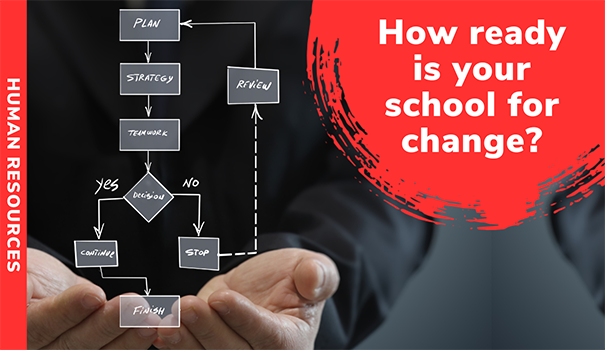How ready is your school for change?
Kate Scott, Research Fellow and PhD Candidate, Graduate School of Education, University of Melbourne conducted research for the Australian Education Research Organisation (AERO) to “explore factors shown to impact school staff’s readiness for change and recommends 4 promising approaches for how school leaders can conceptualise, consider and increase readiness for change at their school.”
In determining the basis for the research, Kate notes: “To support their students’ ever-evolving learning and development needs, as well as respond to external pressures, schools regularly introduce and implement new initiatives aimed at improving student outcomes. However, despite the best efforts of school leadership and staff, many of these initiatives fail to become embedded in schools and, as a result, don’t produce the anticipated impact. A high level of organisational readiness for change has long been considered an important predictor of how successful the implementation of a new program, model or initiative will be.”
To define the problems associated with ‘change’ Kate reviews motivation and capacity for individuals to change, in particular, addressing Halle et al’s 4 categories of motivation for change based on Social Systems and Relationships:
- Beliefs and attitudes
- Willingness and capacity
- Current and persistent stressors
- Personal/Organisational Characteristics
Kate suggests that: “Gaining a better understanding of your staff’s motivation and capacity to change will allow you to identify barriers to and facilitators of change at your school. This allows you to directly address concerns identified by staff and to increase their readiness for change before and during the implementation of a new initiative.”
4 key promising approaches are discussed:
- Take a change leadership approach
- Evaluate your staff’s motivation and capacity to change before the implementation of the new initiative
- Incorporate readiness for change feedback into your new initiative’s implementation planning
- Regularly consider readiness for change during the new initiative’s implementation life cycle
“School leaders can create an environment where their staff are more ‘ready for change’ across the implementation life cycle of a new initiative. By increasing their school staff’s level of readiness for change, school leaders will boost the likelihood of the new initiative succeeding in their school.”
To read the full AERO article, click this link: https://www.edresearch.edu.au/articles/ready-school-change-considerations


